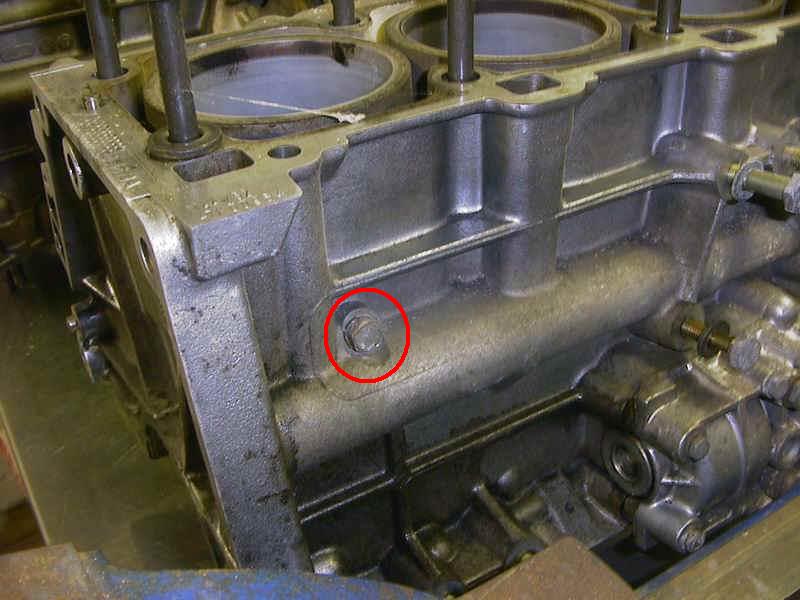Acrobat Printable Version
|
COOL-02, Coolant System Draining, Filling, and Venting
|
Tools

| Model Year | Description | Part Number |
| 83-86 | Drain Plug M10 x 1mm | 944 106 353 00 * |
| 87-91 | Drain Plug M10 x 1.5mm | 944 106 353 01 |
| ALL | Drain Plug Seal | 944 106 354 00 ** |
* Also fits early '87 Model 924S
** Drain plug seal is included on late model plugs
Filling the Coolant System
Porsche recommends using a phosphate free anti-freeze in the aluminum engines used on 944s. Standard glycol type anti-freeze which contains phosphates will cause minerals to plate out on the heat transfer surfaces inside the engine. I've read that it isn't really isn't necessary to use phosphate free anti-freeze in the United States because most water systems have a very low mineral content. However, this doesn't take into account those who have private wells. I figure better safe than sorry. Phosphate free anti-freeze used to be a little hard to find. However, it's becoming much easier to find now days. I personally prefer Prestone Extended Life because you can buy it almost anywhere and it's not that expensive relative to other anti-freeze brands. Be suspicious of anti-freeze that says, "Safe for Aluminum Engines" on the label. Unless it specifically says "Phosphate Free" on the label, it probably isn't. Usually a 50-50 anti-freeze and water mixture is good for most climates. However, if you live in an extremely hot or extremely cold climate, check the manufacturer's label for mixing instructions.
Venting the Coolant System
Tools
If you have completely drained the cooling system (using the drain plug on the side of the block) or have had trouble in the past venting the cooling system, you may want to disconnect the upper radiator hose (at the radiator), hold it up in the air, and fill the block by pouring coolant into the hose. It's best if you open the vent at the outlet of the cylinder head so you can tell when the block is full. Do not fill the coolant hose completely as it will make a huge mess when you reconnect it to the radiator. When a good stream of coolant issues from the vent, stop filling and reconnect the radiator hose. Then continue to fill using one of the preferred methods below.
Method 2 (Gravity Fill)
Since the thermostat is not going to be open when you initially fill the coolant system, the flow path for filling the block is via back flow from the upper radiator hose into the head and the block. This isn't a very efficient flow path for filling and may leave some voids in the head/block area. Therefore, it may be necessary to run the engine until the thermostat opens to flush any voids in the system to the high point (vent).
Clark's Garage © 1998